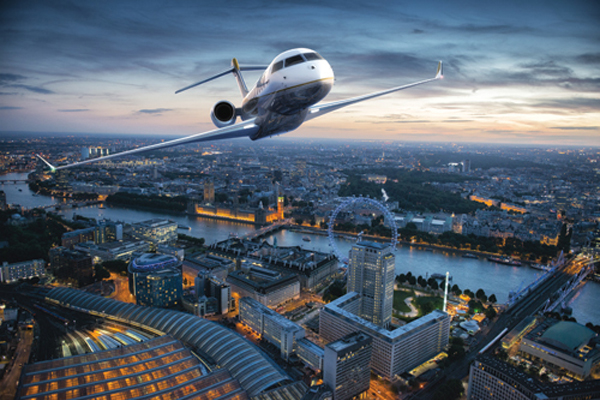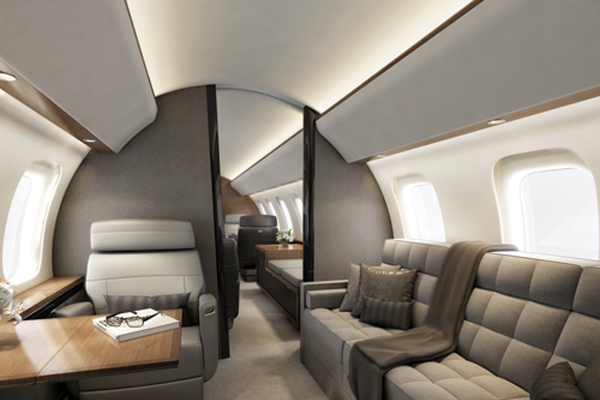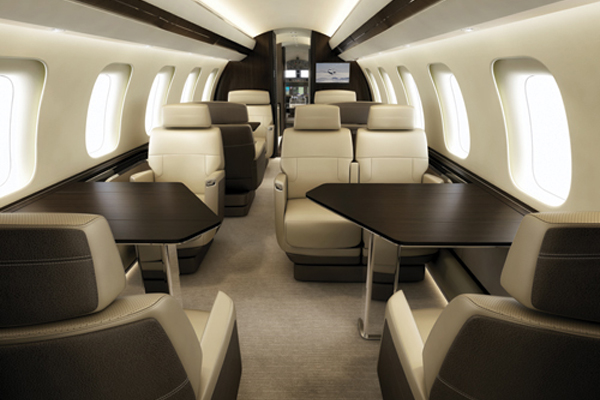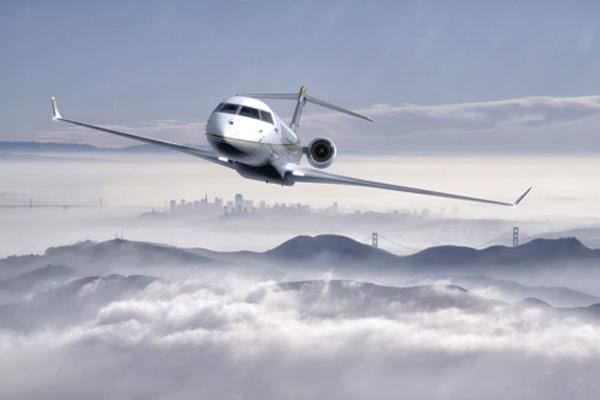Summer 2014
Bombardier Aerospace has achieved key product development milestones in the development of its new Global 7000 and Global 8000 jets with the start of production and assembly of major structures for the first Flight Test Vehicle (FTV1) under the programme.
The news was revealed during the 14th annual European Business Aviation Convention & Exhibition (Ebace) which was held in Geneva, Switzerland, in May.
“We are entering an exciting phase for the Global 7000 and Global 8000,” says Bassam Sabbagh, Vice President and General Manager, Global 7000 and Global 8000 aircraft programme. “The programme is progressing well in the detailed design phase with the majority of the production drawings already released. The start of assembly of our first major structures represents a significant step forward.”
Structural and system suppliers, as well as various Bombardier Aerospace manufacturing sites, are engaged in manufacturing parts and major structures for the FTV1. The rear fuselage and cockpit are currently being assembled at Bombardier Aerospace’s manufacturing facilities in Querétaro, Mexico, and St-Laurent, Canada, respectively.
The centre fuselage is being assembled at Aerolia’s manufacturing facility in Méaulte, France, and the wing is being assembled at Triumph’s facility in Red Oak, Texas.
Set to enter into service in 2016 and 2017 respectively, the new Global 7000 and Global 8000 aircraft exemplify Bombardier’s visionary thinking. Both jets will have the ability to reach more destinations non-stop than ever before, delivering unprecedented levels of performance, flexibility and comfort.
The Global 7000 aircraft will set the standard for a new category of large business jets with the first true four-zone cabin, according to Bombardier. Passengers flying on the Global 7000 aircraft will experience a spectacularly spacious cabin, coupled with a superior high-speed cruise of Mach 0.90. The aircraft will have a range of 7,300 nm (13,520 km).
Meanwhile, the Global 8000 will be the world’s farthest-range business jet with an incredible 7,900 nm (14,631 km). With its superior three-zone cabin design and an unsurpassed Mach 0.90 high-speed cruise ability, passengers will fly in ultimate comfort between cities such as Los Angeles in the US and Sydney in Australia, or Geneva in Switzerland and Shanghai in China, according to Bombardier.
In its 2013-2032 Market Forecast, Bombardier says it anticipates demand for 9,800 aircraft valued at $269 billion across the light, medium and large business jets during the 2013-2022 period.
In comparison, the industry saw 6,000 deliveries valued at $142 billion from 2003 to 2012.
“During the 2023-2032 period, deliveries for the light, medium and large categories are projected to amount to 14,200 aircraft valued at $381 billion. By 2032, manufacturers are expected to deliver approximately 1,500 business aircraft annually,” the report notes.
“To summarise, over the 20-year forecast period of 2013-2032, we anticipate total deliveries of 24,000 aircraft valued at a total of $650 billion,” the report adds.
For the Middle East region, the report notes that the business jet fleet per population of 100 million is expected to grow from 158 to 407 over the next 20 years.
“The Middle East will receive up to 1,200 business jet deliveries during the 2013-2032 period, 420 deliveries between 2013 and 2022, and 780 from 2023 to 2032. The 2012 fleet of 400 business jets will grow to 1,420 aircraft by 2032, representing a CAGR (compound annual growth rate) of approximately 7 per cent,” it notes.
Bombardier is the world’s only manufacturer of both planes and trains. Looking far ahead while delivering today, the company is evolving mobility worldwide by answering the call for more efficient, sustainable and enjoyable transportation everywhere. Its vehicles, services and, most of all, its employees are what make it a global leader in transportation, according to Bombardier.
Bombardier is headquartered in Montréal, Canada. In the fiscal year ended December 31, 2013, it posted revenues of $18.2 billion.






